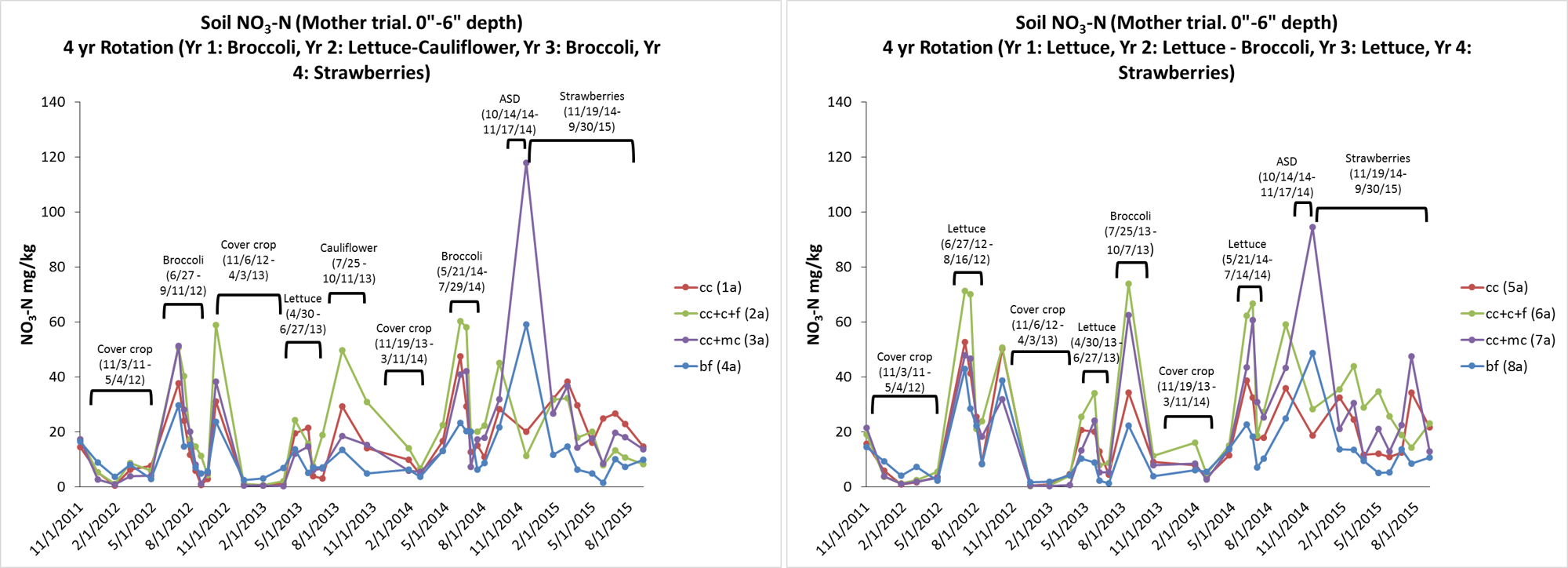We have monitored nitrogen dynamics in the Mother and Baby trials continuously over the past 4 years and we are in the process of analyzing the data to:
- Identify the major factors influencing patterns of nitrogen availability
- Combine the data with modelling using DNDC * to estimate nitrate leaching and nitrous oxide emissions throughout the crop rotations and the quantify impacts of the different fertility management strategies
The figure below illustrates the pattern of soil nitrate in the surface 0-15cm for the 4 year broccoli-based rotation (a) and the lettuce-based rotation (b) at the Mother Trial
In these intensively managed and tilled systems nitrate levels fluctuate greatly throughout the season, showing a pattern of decline during crop or cover crop growth followed by a large spike after residue has been incorporated. Similar patterns were also observed at the Baby trials. This illustrates the importance of maintaining cover over the fall and winter when nitrate released from incorporated crop residues is vulnerable to leaching by winter rains. Also, nitrate released from cover crops in the spring may be vulnerable to leaching from late spring rains or from excessive irrigation during crop establishment. We used a pre-sidedress nitrate test (see Muramoto et al, 2012) to determine additional fertility additions for the vegetable crops in the CC+C+F treatments to help avoid unnecessary addition of fertility amendments.
* DNDC stands for Denitrification Decomposition model, see Li, C. S. 2000. Modeling trace gas emissions from agricultural ecosystems. Nutrient Cycling in Agroecosystems 58:259-276.
